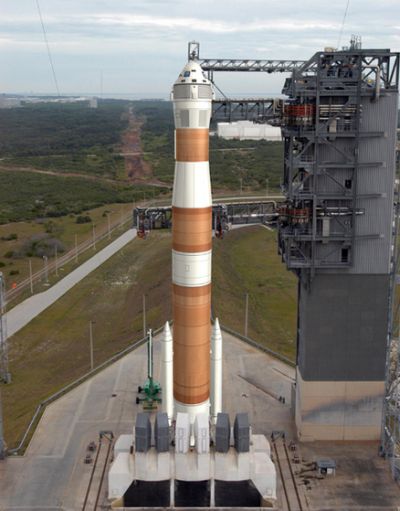Boeing’s CST-100 Sets Sights On Space Transport
By Space Coast Daily // March 3, 2013
Company Aims For Test Flights By 2015
BREVARD COUNTY • CAPE CANAVERAL, FLORIDA – As the field dwindles for funding in NASA’s Commercial Crew Development Program, Boeing’s CST-100 continues to be a major player along with Space X’s Dragon, Blue Origin’s Space Vehicle and Sierra Nevada’s Dream Chaser spacecraft.

Boeing was awarded $460 million from NASA in August in the third round of Commercial Crew development funding.
The CST-100 is a reusable spacecraft that can transport up to seven astronauts or provide a combination of astronauts and cargo.
Design of the Boeing CST-100 allows the spacecraft to be compatible with an array of launch systems and is compatible with a variety of expendable rockets including the Atlas V, Falcon 9 and Delta IV rockets.
The spacecraft is made up of a crew module and service module and reusable for a maximum of 10 flights.
Boeing engineers say the CST-100 has an expansive and organized interior that reduces the need for bulky equipment required to sustain a low-Earth orbit.

Testing
In May, Boeing successfully completed a second parachute drop test of the CST-100 in Nevada which demonstrated the performance of the spacecraft’s reusable landing system.
Lifted by a helicopter to an altitude of about 14,000 feet, the CST-100 capsule tested and deployed a parachute system that guided the spacecraft to a ground landing that was softened by six inflated air bags.
In July, Pratt & Whitney Rocketdyne wrapped up testing for its orbital maneuvering and attitude control thrusters being used on the CST-100.
The spacecraft will employ 24 Rocketdyne thrusters for in-space maneuvering and Rocketdyne also is responsible for the CST-100’s launch abort system to help separate the capsule from a rocket if a problem occurs during liftoff.

Partners
In developing the CST-100, Boeing has partnered with Bieglow Aerospace of Nevada, which is planning to create and launch its own new orbiting space complex similar to the International Space Station.
The CST-100 would ferry crews and cargo to the International Space Station and to Bigelow’s Genesis I and Genesis private inflatable space habitats along with space transport for other low-Earth missions.
Boeing will be conducting additional tests of the CST-100’s landing air bag, heat shield jettison and orbital maneuvering/attitude control engine over the course of the next year.
In another partnership with Space Florida, Boeing has leased NASA’s Orbiter Processing Facility 3 for manufacturing and testing of the CST-100 spacecraft.
Depending upon funding, initial test flights for the spacecraft could be launched from Cape Canaveral aboard United Launch Alliance Atlas V rockets starting in 2015.












